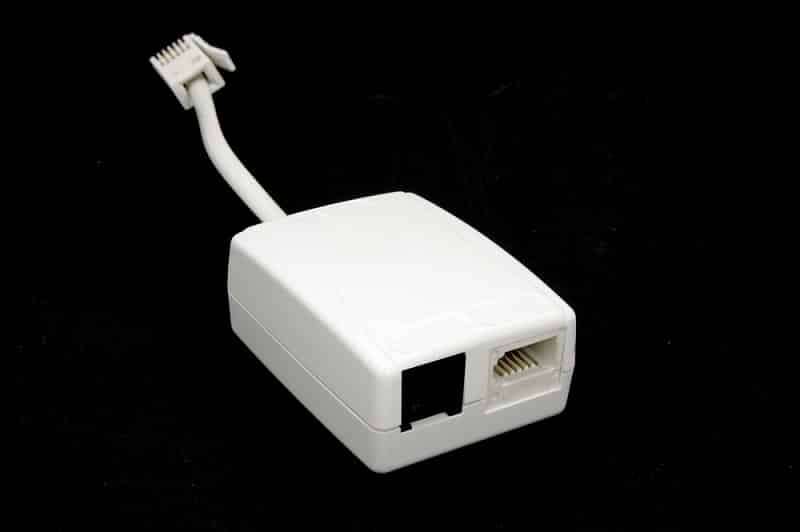
If you are receiving your Internet service through a Digital Subscriber Line there is often a small amount of interference in the line when voice and data is being transmitted over the same line. By applying a DSL filter to your connection you can speed the rate of data transfer by minimizing this interference. The result is an Internet connection that works faster and more efficiently.
There are basically two ways to install DSL Internet service which include a split line or a splitterless line. A split line helps to separate the voice signal from the data signal despite the fact that they are both utilizing the same line. When a line is split this reduces interference between voice and data and in most cases a DSL filter is not necessary.
If you choose a splitterless line a DSL filter will be necessary to minimize the interference. A splitterless line has become more popular because it does not require a technician to visit the premises and the DSL filter can be easily installed by the end user.
That said a DSL filter is a small device that contains RJ11 connectors on both ends. All you have to do is unplug the telephone line from the wall jack, insert the filter into the wall jack, and then connect the telephone line into the filter. That’s it.
How DSL Filters Work
Voice signals and signals from Digital Subscriber Lines utilize the same copper wire for transmission but they operate at different frequencies. A DSL filter splits these two frequencies into two bands with the lower band reserved for your telephone line and the higher band used for your Internet connection. The DSL filter allows you to use both your Internet connection and phone line simultaneously on the same cable.
Where to Buy a DSL Filter
Depending upon on the service provider for your Digital Subscriber Line, in a lot of cases you can get a DSL filter directly from your carrier. If your service provider does not provide DSL filters you can purchase one from your local electronics store or through a DSL filter retailer online.
DSL filters are relatively inexpensive but you still get what you pay for. Make sure you buy a quality DSL filter since you will be counting on the filter for fast and efficient Internet use. You will find a variety of DSL filters which include surge protectors and other options that help your home network to function properly and reliably.
Setting up a DSL Filter and Modem
Although connecting a DSL filter is a fairly simple process it helps to be aware of a few things when you are setting up a DSL filter and a DSL modem. First, you must remember that the DSL filter prevents the DSL signal from reaching your telephone and any other devices that utilize the phone cable. This is why it is important to install the DSL filter on the phone line that provides a connection to each phone or other devices that share the phone line with the DSL service. The DSL filter should NOT be installed on the telephone line that connects to the DSL modem.
The other devices that share the telephone line with the DSL service may include cordless phones, satellite TV receivers, other landline telephones, or answering machines to name a few devices. When you install the DSL filter on the line that connects to your telephone and other devices and shares the DSL service, you must disconnect the cord from the jack on the wall and then insert the cord into the one end of the DSL filter before you insert the DSL filter into the wall jack.
It is necessary to repeat this process for every device that uses the phone line and shares the DSL service. You have performed the installation properly when you have inserted a DSL filter to every jack with a device that utilizes the telephone line and when you have omitted the DSL filter on the telephone cable that connects to the DSL modem.
Once this setup is complete, you can connect the DSL modem to the telephone jack that does not have a DSL filter installed. You can do this by connecting the power cable to the DSL modem and then into a standard electrical outlet. Plug the telephone cable into your DSL modem and then connect the other end of the cable to the telephone jack that does not contain a DSL filter.
When this process is complete you will need to use an Ethernet cable (usually a blue cable) to establish a connection between your PC and the DSL modem. The Ethernet cable is connected to the network port of your PC and then the other end is plugged into the DSL modem. This should complete the setup between your DSL filter and DSL modem.